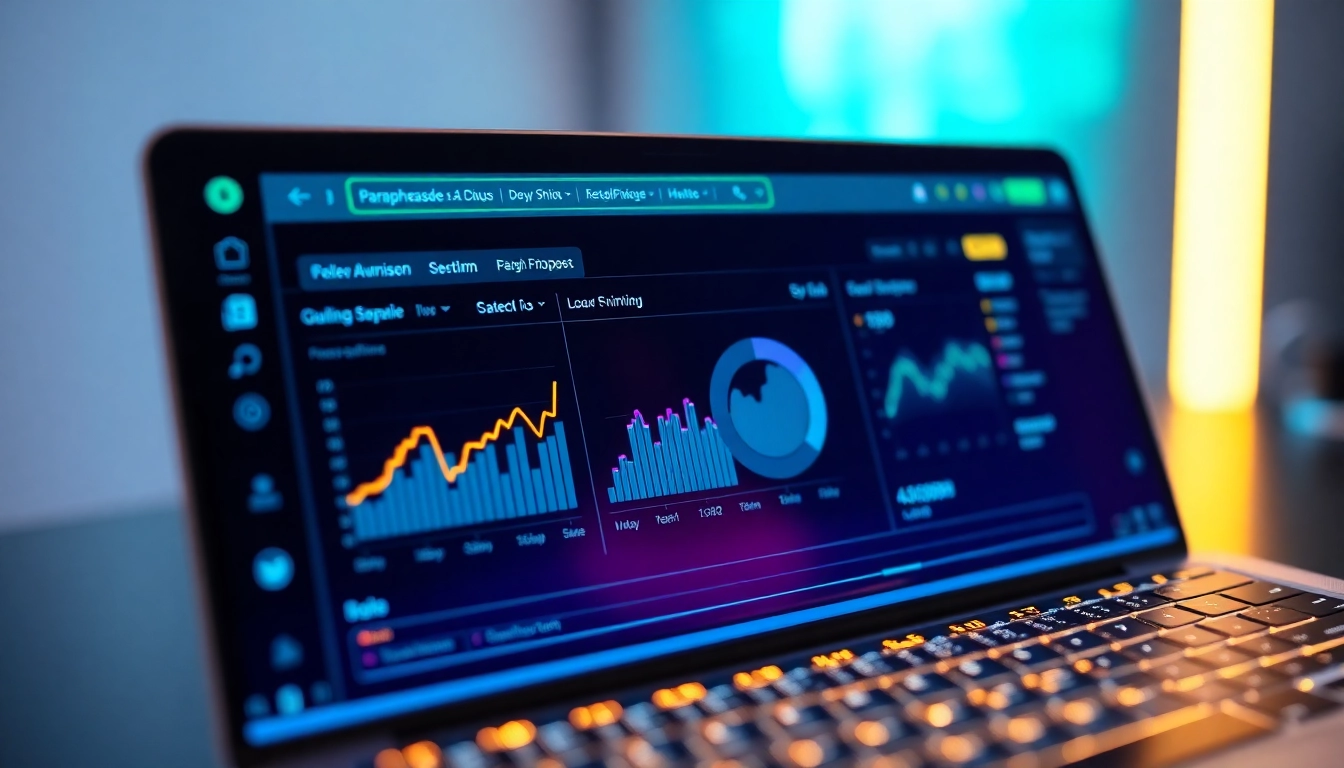Introduction to Cryptocurrency Mining
Cryptocurrency mining is a cornerstone of blockchain technology, serving as the process by which new digital coins are generated and transactions are validated within a decentralized network. At its core, cryptocurrency mining involves solving complex computational puzzles to add blocks of verified transactions to the blockchain, ensuring security, transparency, and the integrity of the digital ledger. This process not only secures the network but also incentivizes miners through rewards, fostering the continuous creation and circulation of cryptocurrencies such as Bitcoin, Ethereum, and many others.
Understanding what cryptocurrency mining entails is essential for investors, technology enthusiasts, and entrepreneurs seeking to participate in the blockchain revolution. As the industry evolves, so do the technologies and strategies required to be successful. This comprehensive guide aims to demystify the complexities of mining, providing valuable insights into hardware choices, operational strategies, market considerations, and future trends—empowering you to maximize your efficiency and profitability in this dynamic field.
What Is Cryptocurrency Mining and Its Role in Blockchain
Foundations of Blockchain and Mining
Blockchain is a distributed ledger technology that records transactions across multiple computers, making data tampering and fraudulent activities exceedingly difficult. Miners play a critical role in this ecosystem by validating new transactions, packaging them into blocks, and securing the network against malicious attacks.
The process begins when a transaction is initiated—say, transferring Bitcoin from one wallet to another. Miners verify the transaction’s authenticity, confirm that the sender has sufficient funds, and then include it in a candidate block. To add this block to the blockchain, miners must solve a cryptographic puzzle—an effort-intensive task that requires substantial computational power. This puzzle is designed to be computationally difficult to ensure network security and control the issuance rate of new coins.
Mining as the Engine for Cryptocurrency Creation and Security
Mining serves a dual purpose: it is the mechanism for minting new coins and for maintaining the trustworthiness of the blockchain. For Bitcoin, the process of mining not only introduces new coins into circulation—allocated as block rewards—but also confirms transactions, preventing double-spending and fraudulent entries.
This coordination is achieved through consensus algorithms—most notably proof-of-work (PoW)—that require miners to expend computational effort. The first miner to find a valid solution broadcasts the new block to the network, where other nodes verify its validity. Upon consensus, the block becomes part of the immutable blockchain, and the successful miner receives the reward—currently 6.25 Bitcoin per block as of 2024, with periodic adjustments based on network protocols.
History and Evolution of Mining Technologies
Early Mining Methods
Cryptocurrency mining began with basic CPU-based systems. Bitcoin’s original mining software was designed to run on ordinary desktop processors, allowing early enthusiasts and hobbyists to mine effectively from personal computers. During this initial phase, mining was accessible and affordable, fostering community growth and network security.
Transition to GPU and FPGA Mining
As the network grew, so did the difficulty of mining puzzles. GPUs (Graphics Processing Units) emerged as a more efficient alternative, capable of performing parallel calculations at a much higher rate than CPUs. This led to a shift where miners adopted GPU rigs to maintain profitability.
Subsequently, Field Programmable Gate Arrays (FPGAs) entered the scene. These customizable hardware devices offered better energy efficiency than GPUs, enabling miners to optimize their power consumption and hash rates further.
The Rise of ASIC Miners
Most recently, Application-Specific Integrated Circuits (ASICs) have revolutionized cryptocurrency mining. Designed specifically for mining algorithms like SHA-256 (Bitcoin) or Ethash (Ethereum), ASICs provide unparalleled performance and energy efficiency. Their deployment has centralized mining efforts partly due to their high cost and specialized nature, raising ongoing discussions about decentralization in the industry.
Understanding Mining Terminology and Concepts
Hash Rate
The hash rate measures a miner’s computational power, expressed in hashes per second (H/s), kilohashes (KH/s), megahashes (MH/s), gigahashes (GH/s), or terahashes (TH/s). A higher hash rate indicates more attempts to solve the cryptographic puzzle per unit time, increasing the chances of earning rewards.
Difficulty Adjustment
Mining difficulty is a parameter that adjusts periodically to ensure blocks are mined at a consistent rate—approximately every 10 minutes for Bitcoin. If miners collectively increase the network’s hash rate, the difficulty increases to maintain this pace, ensuring network stability.
Block Reward
The reward given to the first miner to solve the puzzle and add a new block to the blockchain. This reward comprises newly minted coins and transaction fees. Over time, block rewards diminish through halving events, influencing miners’ profitability and the coin’s circulating supply.
Consensus Algorithms
Protocols like proof-of-work (PoW) and proof-of-stake (PoS) define how network participants agree on the state of the blockchain. Currently, PoW remains dominant in Bitcoin and many other cryptocurrencies, but alternative mechanisms like PoS aim to reduce energy consumption.
Essential Hardware and Software for Cryptocurrency Mining
Choosing the Right Mining Rigs and ASIC Miners
Selecting suitable hardware depends on your goals, budget, and the specific cryptocurrency you intend to mine. For Bitcoin, ASIC miners such as the Antminer S19 Pro or Bitmain’s Antminer series offer high performance but require significant capital investment. For altcoins like Ethereum, high-end GPUs—such as NVIDIA’s RTX 3080 or AMD Radeon series—remain popular.
When evaluating hardware, consider key factors like hash rate, power consumption, initial cost, and compatibility. Balancing these aspects ensures optimal profitability and sustainability.
Top Software and Mining Platforms
Effective mining requires robust software to connect your hardware to networks and mining pools. Popular options include CGMiner, BFGMiner, EasyMiner, and proprietary software provided by hardware manufacturers. These platforms enable configuration, performance monitoring, and troubleshooting.
Mining pools—groups of miners working together—enhance the odds of earning consistent rewards. Leading pools like Slush Pool, F2Pool, and Antpool allow individual miners to aggregate their computing power, share payouts, and reduce variability in earnings.
Setting Up Your Mining Hardware for Optimal Performance
Proper setup maximizes hardware lifespan and efficiency. Key steps include applying suitable thermal management—adequate cooling and ventilation—and overclocking within safe limits. Regular maintenance, firmware updates, and benchmarking help sustain high performance and prevent hardware failures.
Additionally, selecting energy-efficient components can drastically cut operational costs, especially in regions with high electricity prices. Implementing automated system monitoring tools ensures quick response to hardware issues and minimizes downtime.
Strategies for Successful Mining Operations
Building a Cost-Effective Mining Farm
Designing a profitable mining operation involves careful planning of capital expenditure and ongoing operational costs. Key considerations include hardware procurement, energy infrastructure, cooling solutions, and physical security.
Leverage economies of scale by purchasing in bulk and negotiating electricity rates. Use energy-efficient hardware and optimize layout to maximize airflow and cooling. Conduct thorough cost-benefit analyses before expanding your mining farm to ensure each addition enhances overall profitability.
Energy Efficiency and Sustainable Mining Practices
Mining’s energy consumption has raised environmental concerns globally. Emphasizing renewable energy sources—such as solar, wind, or hydroelectric power—can help reduce carbon footprints and operational costs. Investing in energy-efficient hardware further minimizes power usage per hash achieved.
Innovations like immersion cooling, waste heat utilization, and location-based mining strategies enable sustainable operations. Regulatory landscapes are increasingly favoring greener practices, which can also provide marketing advantages and investor confidence.
Managing Hardware Maintenance and Troubleshooting
Regular hardware diagnostics, firmware updates, and preventive maintenance are vital for stable and efficient operations. Monitor temperature, voltage, and hash rate metrics continuously to detect deviations indicating potential failures or security breaches.
Developing troubleshooting protocols and maintaining spare parts reduce downtime and restore mining activities swiftly. Incorporating remote management solutions ensures efficient oversight of multiple mining rigs across different locations.
Maximizing Profits and Managing Risks
Monitoring Market Trends and Cryptocurrency Prices
Cryptocurrency values are highly volatile, directly impacting mining profitability. Staying informed through real-time price dashboards, news outlets, and industry reports helps miners adjust strategies timely—such as switching to more profitable coins or optimizing hardware settings.
Tools like MiningPoolHub’s dashboard or CoinGecko enable traders and miners to track price movements, network difficulty, and upcoming halving events to make informed operational decisions.
Understanding Mining Rewards and Payouts
Mining rewards consist of block rewards and transaction fees. Payout structures vary across pools—some pay out after reaching a minimum threshold, others distribute rewards continuously. Understanding these mechanisms ensures effective cash flow management and helps project long-term profitability.
Implementing automated payout tracking and tax reporting practices optimizes financial planning and compliance.
Legal Considerations and Avoiding Common Pitfalls
Legal frameworks regarding cryptocurrency mining differ across jurisdictions. Miners must stay compliant with local laws—including licensing, taxation, and electricity consumption regulations—to avoid penalties or shutdowns.
Risks include hardware obsolescence, electricity costs, security threats, and market volatility. Diversifying investments, securing mining operations against cyber threats, and staying informed about regulatory changes are crucial for sustainable success.
Future Trends in Cryptocurrency Mining
Emerging Technologies and Hardware Innovations
The industry continues to innovate with developments like quantum computing, which could revolutionize cryptography and mining. However, practical, scalable quantum miners remain years away.
Hardware advancements focus on improving energy efficiency, increasing hash rates, and reducing physical size. Research into alternative algorithms resistant to ASIC dominance—such as proof-of-space or proof-of-stake—may also reshape mining in the coming years.
Impact of Cryptocurrency Regulations
Global regulatory environments are becoming stricter, with some countries banning or heavily restricting mining activities. Conversely, others are adopting policies to incentivize sustainable and compliant mining practices.
Adapting to changing legal landscapes will require miners to stay continuously informed, diversify locations, and explore alternative consensus mechanisms to maintain operational continuity.
Adopting Sustainable and Green Mining Solutions
The push toward sustainability is transforming the industry. Investments in renewable energy sourcing, innovative cooling solutions, and carbon offset initiatives are gaining traction.
By implementing eco-friendly practices, miners can reduce environmental impact, benefit from favorable regulation, and appeal to a broader investor base concerned with environmental, social, and governance (ESG) criteria.



